Clinical Laboratories
Research Laboratories
Biorepositories
Pharmaceutical Companies
Diagnostic Laboratories
On-Premise
Cloud-Based
Web-Based
Healthcare Organizations
Laboratory Service Providers
Pharmaceutical Companies
Academic Institutions
Standalone LIS
Integrated LIS
North America
Europe
South America
Asia Pacific
Middle East and Africa
North America Outlook (USD Billion, 2019-2035)
North America Laboratory Information Systems Market by Application Type
Clinical Laboratories
Research Laboratories
Biorepositories
Pharmaceutical Companies
Diagnostic Laboratories
North America Laboratory Information Systems Market by Deployment Mode Type
On-Premise
Cloud-Based
Web-Based
North America Laboratory Information Systems Market by End User Type
Healthcare Organizations
Laboratory Service Providers
Pharmaceutical Companies
Academic Institutions
North America Laboratory Information Systems Market by Product Type
Standalone LIS
Integrated LIS
North America Laboratory Information Systems Market by Regional Type
US
Canada
US Outlook (USD Billion, 2019-2035)
US Laboratory Information Systems Market by Application Type
Clinical Laboratories
Research Laboratories
Biorepositories
Pharmaceutical Companies
Diagnostic Laboratories
US Laboratory Information Systems Market by Deployment Mode Type
On-Premise
Cloud-Based
Web-Based
US Laboratory Information Systems Market by End User Type
Healthcare Organizations
Laboratory Service Providers
Pharmaceutical Companies
Academic Institutions
US Laboratory Information Systems Market by Product Type
Standalone LIS
Integrated LIS
CANADA Outlook (USD Billion, 2019-2035)
CANADA Laboratory Information Systems Market by Application Type
Clinical Laboratories
Research Laboratories
Biorepositories
Pharmaceutical Companies
Diagnostic Laboratories
CANADA Laboratory Information Systems Market by Deployment Mode Type
On-Premise
Cloud-Based
Web-Based
CANADA Laboratory Information Systems Market by End User Type
Healthcare Organizations
Laboratory Service Providers
Pharmaceutical Companies
Academic Institutions
CANADA Laboratory Information Systems Market by Product Type
Standalone LIS
Integrated LIS
Europe Outlook (USD Billion, 2019-2035)
Europe Laboratory Information Systems Market by Application Type
Clinical Laboratories
Research Laboratories
Biorepositories
Pharmaceutical Companies
Diagnostic Laboratories
Europe Laboratory Information Systems Market by Deployment Mode Type
On-Premise
Cloud-Based
Web-Based
Europe Laboratory Information Systems Market by End User Type
Healthcare Organizations
Laboratory Service Providers
Pharmaceutical Companies
Academic Institutions
Europe Laboratory Information Systems Market by Product Type
Standalone LIS
Integrated LIS
Europe Laboratory Information Systems Market by Regional Type
Germany
UK
France
Russia
Italy
Spain
Rest of Europe
GERMANY Outlook (USD Billion, 2019-2035)
GERMANY Laboratory Information Systems Market by Application Type
Clinical Laboratories
Research Laboratories
Biorepositories
Pharmaceutical Companies
Diagnostic Laboratories
GERMANY Laboratory Information Systems Market by Deployment Mode Type
On-Premise
Cloud-Based
Web-Based
GERMANY Laboratory Information Systems Market by End User Type
Healthcare Organizations
Laboratory Service Providers
Pharmaceutical Companies
Academic Institutions
GERMANY Laboratory Information Systems Market by Product Type
Standalone LIS
Integrated LIS
UK Outlook (USD Billion, 2019-2035)
UK Laboratory Information Systems Market by Application Type
Clinical Laboratories
Research Laboratories
Biorepositories
Pharmaceutical Companies
Diagnostic Laboratories
UK Laboratory Information Systems Market by Deployment Mode Type
On-Premise
Cloud-Based
Web-Based
UK Laboratory Information Systems Market by End User Type
Healthcare Organizations
Laboratory Service Providers
Pharmaceutical Companies
Academic Institutions
UK Laboratory Information Systems Market by Product Type
Standalone LIS
Integrated LIS
FRANCE Outlook (USD Billion, 2019-2035)
FRANCE Laboratory Information Systems Market by Application Type
Clinical Laboratories
Research Laboratories
Biorepositories
Pharmaceutical Companies
Diagnostic Laboratories
FRANCE Laboratory Information Systems Market by Deployment Mode Type
On-Premise
Cloud-Based
Web-Based
FRANCE Laboratory Information Systems Market by End User Type
Healthcare Organizations
Laboratory Service Providers
Pharmaceutical Companies
Academic Institutions
FRANCE Laboratory Information Systems Market by Product Type
Standalone LIS
Integrated LIS
RUSSIA Outlook (USD Billion, 2019-2035)
RUSSIA Laboratory Information Systems Market by Application Type
Clinical Laboratories
Research Laboratories
Biorepositories
Pharmaceutical Companies
Diagnostic Laboratories
RUSSIA Laboratory Information Systems Market by Deployment Mode Type
On-Premise
Cloud-Based
Web-Based
RUSSIA Laboratory Information Systems Market by End User Type
Healthcare Organizations
Laboratory Service Providers
Pharmaceutical Companies
Academic Institutions
RUSSIA Laboratory Information Systems Market by Product Type
Standalone LIS
Integrated LIS
ITALY Outlook (USD Billion, 2019-2035)
ITALY Laboratory Information Systems Market by Application Type
Clinical Laboratories
Research Laboratories
Biorepositories
Pharmaceutical Companies
Diagnostic Laboratories
ITALY Laboratory Information Systems Market by Deployment Mode Type
On-Premise
Cloud-Based
Web-Based
ITALY Laboratory Information Systems Market by End User Type
Healthcare Organizations
Laboratory Service Providers
Pharmaceutical Companies
Academic Institutions
ITALY Laboratory Information Systems Market by Product Type
Standalone LIS
Integrated LIS
SPAIN Outlook (USD Billion, 2019-2035)
SPAIN Laboratory Information Systems Market by Application Type
Clinical Laboratories
Research Laboratories
Biorepositories
Pharmaceutical Companies
Diagnostic Laboratories
SPAIN Laboratory Information Systems Market by Deployment Mode Type
On-Premise
Cloud-Based
Web-Based
SPAIN Laboratory Information Systems Market by End User Type
Healthcare Organizations
Laboratory Service Providers
Pharmaceutical Companies
Academic Institutions
SPAIN Laboratory Information Systems Market by Product Type
Standalone LIS
Integrated LIS
REST OF EUROPE Outlook (USD Billion, 2019-2035)
REST OF EUROPE Laboratory Information Systems Market by Application Type
Clinical Laboratories
Research Laboratories
Biorepositories
Pharmaceutical Companies
Diagnostic Laboratories
REST OF EUROPE Laboratory Information Systems Market by Deployment Mode Type
On-Premise
Cloud-Based
Web-Based
REST OF EUROPE Laboratory Information Systems Market by End User Type
Healthcare Organizations
Laboratory Service Providers
Pharmaceutical Companies
Academic Institutions
REST OF EUROPE Laboratory Information Systems Market by Product Type
Standalone LIS
Integrated LIS
APAC Outlook (USD Billion, 2019-2035)
APAC Laboratory Information Systems Market by Application Type
Clinical Laboratories
Research Laboratories
Biorepositories
Pharmaceutical Companies
Diagnostic Laboratories
APAC Laboratory Information Systems Market by Deployment Mode Type
On-Premise
Cloud-Based
Web-Based
APAC Laboratory Information Systems Market by End User Type
Healthcare Organizations
Laboratory Service Providers
Pharmaceutical Companies
Academic Institutions
APAC Laboratory Information Systems Market by Product Type
Standalone LIS
Integrated LIS
APAC Laboratory Information Systems Market by Regional Type
China
India
Japan
South Korea
Malaysia
Thailand
Indonesia
Rest of APAC
CHINA Outlook (USD Billion, 2019-2035)
CHINA Laboratory Information Systems Market by Application Type
Clinical Laboratories
Research Laboratories
Biorepositories
Pharmaceutical Companies
Diagnostic Laboratories
CHINA Laboratory Information Systems Market by Deployment Mode Type
On-Premise
Cloud-Based
Web-Based
CHINA Laboratory Information Systems Market by End User Type
Healthcare Organizations
Laboratory Service Providers
Pharmaceutical Companies
Academic Institutions
CHINA Laboratory Information Systems Market by Product Type
Standalone LIS
Integrated LIS
INDIA Outlook (USD Billion, 2019-2035)
INDIA Laboratory Information Systems Market by Application Type
Clinical Laboratories
Research Laboratories
Biorepositories
Pharmaceutical Companies
Diagnostic Laboratories
INDIA Laboratory Information Systems Market by Deployment Mode Type
On-Premise
Cloud-Based
Web-Based
INDIA Laboratory Information Systems Market by End User Type
Healthcare Organizations
Laboratory Service Providers
Pharmaceutical Companies
Academic Institutions
INDIA Laboratory Information Systems Market by Product Type
Standalone LIS
Integrated LIS
JAPAN Outlook (USD Billion, 2019-2035)
JAPAN Laboratory Information Systems Market by Application Type
Clinical Laboratories
Research Laboratories
Biorepositories
Pharmaceutical Companies
Diagnostic Laboratories
JAPAN Laboratory Information Systems Market by Deployment Mode Type
On-Premise
Cloud-Based
Web-Based
JAPAN Laboratory Information Systems Market by End User Type
Healthcare Organizations
Laboratory Service Providers
Pharmaceutical Companies
Academic Institutions
JAPAN Laboratory Information Systems Market by Product Type
Standalone LIS
Integrated LIS
SOUTH KOREA Outlook (USD Billion, 2019-2035)
SOUTH KOREA Laboratory Information Systems Market by Application Type
Clinical Laboratories
Research Laboratories
Biorepositories
Pharmaceutical Companies
Diagnostic Laboratories
SOUTH KOREA Laboratory Information Systems Market by Deployment Mode Type
On-Premise
Cloud-Based
Web-Based
SOUTH KOREA Laboratory Information Systems Market by End User Type
Healthcare Organizations
Laboratory Service Providers
Pharmaceutical Companies
Academic Institutions
SOUTH KOREA Laboratory Information Systems Market by Product Type
Standalone LIS
Integrated LIS
MALAYSIA Outlook (USD Billion, 2019-2035)
MALAYSIA Laboratory Information Systems Market by Application Type
Clinical Laboratories
Research Laboratories
Biorepositories
Pharmaceutical Companies
Diagnostic Laboratories
MALAYSIA Laboratory Information Systems Market by Deployment Mode Type
On-Premise
Cloud-Based
Web-Based
MALAYSIA Laboratory Information Systems Market by End User Type
Healthcare Organizations
Laboratory Service Providers
Pharmaceutical Companies
Academic Institutions
MALAYSIA Laboratory Information Systems Market by Product Type
Standalone LIS
Integrated LIS
THAILAND Outlook (USD Billion, 2019-2035)
THAILAND Laboratory Information Systems Market by Application Type
Clinical Laboratories
Research Laboratories
Biorepositories
Pharmaceutical Companies
Diagnostic Laboratories
THAILAND Laboratory Information Systems Market by Deployment Mode Type
On-Premise
Cloud-Based
Web-Based
THAILAND Laboratory Information Systems Market by End User Type
Healthcare Organizations
Laboratory Service Providers
Pharmaceutical Companies
Academic Institutions
THAILAND Laboratory Information Systems Market by Product Type
Standalone LIS
Integrated LIS
INDONESIA Outlook (USD Billion, 2019-2035)
INDONESIA Laboratory Information Systems Market by Application Type
Clinical Laboratories
Research Laboratories
Biorepositories
Pharmaceutical Companies
Diagnostic Laboratories
INDONESIA Laboratory Information Systems Market by Deployment Mode Type
On-Premise
Cloud-Based
Web-Based
INDONESIA Laboratory Information Systems Market by End User Type
Healthcare Organizations
Laboratory Service Providers
Pharmaceutical Companies
Academic Institutions
INDONESIA Laboratory Information Systems Market by Product Type
Standalone LIS
Integrated LIS
REST OF APAC Outlook (USD Billion, 2019-2035)
REST OF APAC Laboratory Information Systems Market by Application Type
Clinical Laboratories
Research Laboratories
Biorepositories
Pharmaceutical Companies
Diagnostic Laboratories
REST OF APAC Laboratory Information Systems Market by Deployment Mode Type
On-Premise
Cloud-Based
Web-Based
REST OF APAC Laboratory Information Systems Market by End User Type
Healthcare Organizations
Laboratory Service Providers
Pharmaceutical Companies
Academic Institutions
REST OF APAC Laboratory Information Systems Market by Product Type
Standalone LIS
Integrated LIS
South America Outlook (USD Billion, 2019-2035)
South America Laboratory Information Systems Market by Application Type
Clinical Laboratories
Research Laboratories
Biorepositories
Pharmaceutical Companies
Diagnostic Laboratories
South America Laboratory Information Systems Market by Deployment Mode Type
On-Premise
Cloud-Based
Web-Based
South America Laboratory Information Systems Market by End User Type
Healthcare Organizations
Laboratory Service Providers
Pharmaceutical Companies
Academic Institutions
South America Laboratory Information Systems Market by Product Type
Standalone LIS
Integrated LIS
South America Laboratory Information Systems Market by Regional Type
Brazil
Mexico
Argentina
Rest of South America
BRAZIL Outlook (USD Billion, 2019-2035)
BRAZIL Laboratory Information Systems Market by Application Type
Clinical Laboratories
Research Laboratories
Biorepositories
Pharmaceutical Companies
Diagnostic Laboratories
BRAZIL Laboratory Information Systems Market by Deployment Mode Type
On-Premise
Cloud-Based
Web-Based
BRAZIL Laboratory Information Systems Market by End User Type
Healthcare Organizations
Laboratory Service Providers
Pharmaceutical Companies
Academic Institutions
BRAZIL Laboratory Information Systems Market by Product Type
Standalone LIS
Integrated LIS
MEXICO Outlook (USD Billion, 2019-2035)
MEXICO Laboratory Information Systems Market by Application Type
Clinical Laboratories
Research Laboratories
Biorepositories
Pharmaceutical Companies
Diagnostic Laboratories
MEXICO Laboratory Information Systems Market by Deployment Mode Type
On-Premise
Cloud-Based
Web-Based
MEXICO Laboratory Information Systems Market by End User Type
Healthcare Organizations
Laboratory Service Providers
Pharmaceutical Companies
Academic Institutions
MEXICO Laboratory Information Systems Market by Product Type
Standalone LIS
Integrated LIS
ARGENTINA Outlook (USD Billion, 2019-2035)
ARGENTINA Laboratory Information Systems Market by Application Type
Clinical Laboratories
Research Laboratories
Biorepositories
Pharmaceutical Companies
Diagnostic Laboratories
ARGENTINA Laboratory Information Systems Market by Deployment Mode Type
On-Premise
Cloud-Based
Web-Based
ARGENTINA Laboratory Information Systems Market by End User Type
Healthcare Organizations
Laboratory Service Providers
Pharmaceutical Companies
Academic Institutions
ARGENTINA Laboratory Information Systems Market by Product Type
Standalone LIS
Integrated LIS
REST OF SOUTH AMERICA Outlook (USD Billion, 2019-2035)
REST OF SOUTH AMERICA Laboratory Information Systems Market by Application Type
Clinical Laboratories
Research Laboratories
Biorepositories
Pharmaceutical Companies
Diagnostic Laboratories
REST OF SOUTH AMERICA Laboratory Information Systems Market by Deployment Mode Type
On-Premise
Cloud-Based
Web-Based
REST OF SOUTH AMERICA Laboratory Information Systems Market by End User Type
Healthcare Organizations
Laboratory Service Providers
Pharmaceutical Companies
Academic Institutions
REST OF SOUTH AMERICA Laboratory Information Systems Market by Product Type
Standalone LIS
Integrated LIS
MEA Outlook (USD Billion, 2019-2035)
MEA Laboratory Information Systems Market by Application Type
Clinical Laboratories
Research Laboratories
Biorepositories
Pharmaceutical Companies
Diagnostic Laboratories
MEA Laboratory Information Systems Market by Deployment Mode Type
On-Premise
Cloud-Based
Web-Based
MEA Laboratory Information Systems Market by End User Type
Healthcare Organizations
Laboratory Service Providers
Pharmaceutical Companies
Academic Institutions
MEA Laboratory Information Systems Market by Product Type
Standalone LIS
Integrated LIS
MEA Laboratory Information Systems Market by Regional Type
GCC Countries
South Africa
Rest of MEA
GCC COUNTRIES Outlook (USD Billion, 2019-2035)
GCC COUNTRIES Laboratory Information Systems Market by Application Type
Clinical Laboratories
Research Laboratories
Biorepositories
Pharmaceutical Companies
Diagnostic Laboratories
GCC COUNTRIES Laboratory Information Systems Market by Deployment Mode Type
On-Premise
Cloud-Based
Web-Based
GCC COUNTRIES Laboratory Information Systems Market by End User Type
Healthcare Organizations
Laboratory Service Providers
Pharmaceutical Companies
Academic Institutions
GCC COUNTRIES Laboratory Information Systems Market by Product Type
Standalone LIS
Integrated LIS
SOUTH AFRICA Outlook (USD Billion, 2019-2035)
SOUTH AFRICA Laboratory Information Systems Market by Application Type
Clinical Laboratories
Research Laboratories
Biorepositories
Pharmaceutical Companies
Diagnostic Laboratories
SOUTH AFRICA Laboratory Information Systems Market by Deployment Mode Type
On-Premise
Cloud-Based
Web-Based
SOUTH AFRICA Laboratory Information Systems Market by End User Type
Healthcare Organizations
Laboratory Service Providers
Pharmaceutical Companies
Academic Institutions
SOUTH AFRICA Laboratory Information Systems Market by Product Type
Standalone LIS
Integrated LIS
REST OF MEA Outlook (USD Billion, 2019-2035)
REST OF MEA Laboratory Information Systems Market by Application Type
Clinical Laboratories
Research Laboratories
Biorepositories
Pharmaceutical Companies
Diagnostic Laboratories
REST OF MEA Laboratory Information Systems Market by Deployment Mode Type
On-Premise
Cloud-Based
Web-Based
REST OF MEA Laboratory Information Systems Market by End User Type
Healthcare Organizations
Laboratory Service Providers
Pharmaceutical Companies
Academic Institutions
REST OF MEA Laboratory Information Systems Market by Product Type
Standalone LIS
Integrated LIS
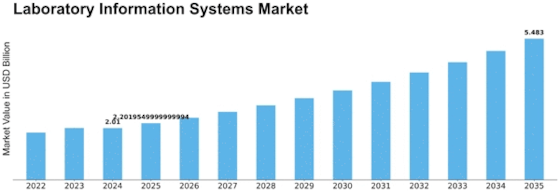

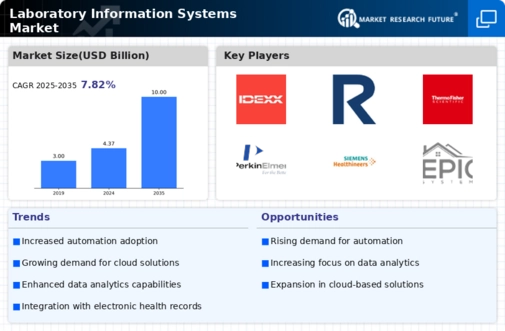

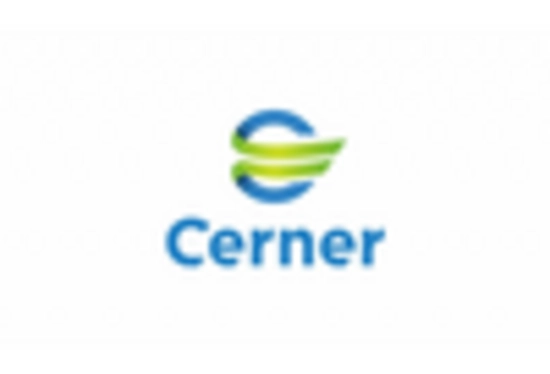
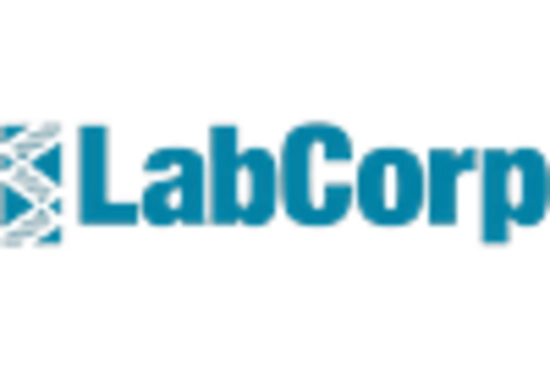
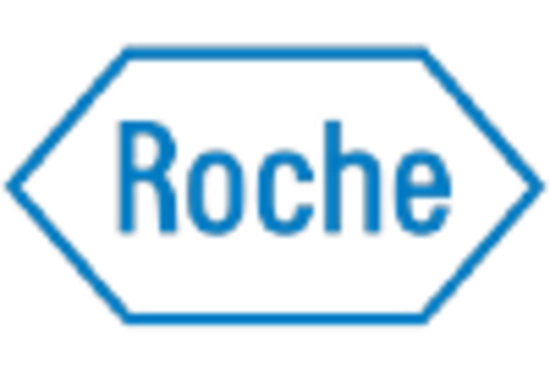











Leave a Comment